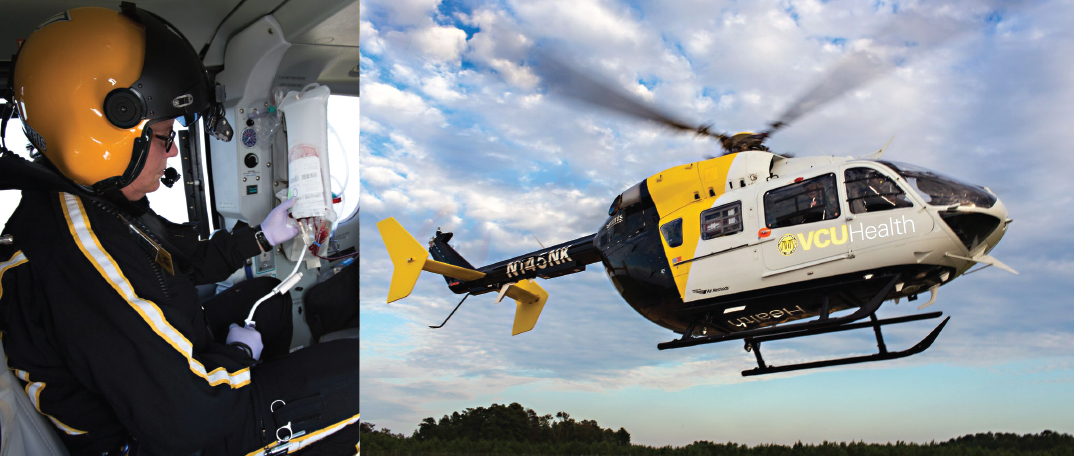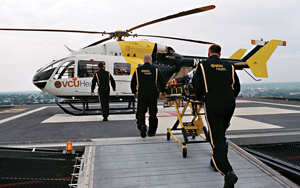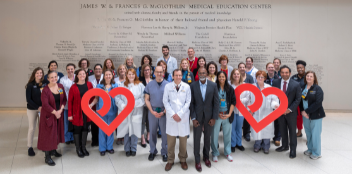Air Transport Provides Critical Care

When lives are on the line, VCU Health’s helicopters are a welcome sight.
“We have two helicopters and a 35-member team that responds to about 1,200 to 1,300 calls each year,” said Jay Lovelady, R.N., operations manager of the critical care transport program and flight nurse. Often, VCU Health crews transport patients from smaller hospitals, car wrecks and other emergency scenes around the state to VCU Medical Center, the only Level I trauma center in the region.
Each aircraft is staffed by three people. “They’re on duty 24/7, 365. There’s one pilot, one flight nurse and one flight paramedic available at all times.” The crew is supported by medical director Dr. Harinda Dhindsa, and clinical manager Katie Rodman.
The fleet includes the new Airbus H145 and an Airbus H135. “They’re very similar, but the 145 is a larger aircraft. It will fly a little bit further, it carries more weight,” he said.

The 145’s larger size allows for transports of heavier patients or an additional person—such as the parent of an injured child. Specialty transports, such as ECMO patients, who require a heart perfusionist and additional equipment, are now possible.
Airbus H145 is based at Dinwiddie County Airport and often serves cities in southern Virginia, such as South Hill, Emporia and Farmville. West Point is the hub for Airbus H135, reaching patients in Williamsburg, Northern Neck, the Peninsula and Tidewater. The team also supports the Virginia State Police’s MedFlight program with flight nurses and staffs a ground critical care transport ambulance based at VCU Medical Center.
Lovelady, who has worked as a flight nurse for 13 years, previously served as a firefighter, paramedic, and ER and ICU nurse. “The critical care transport setting is really a blend of a lot of that,” he said. “I always enjoy the fact that no two days are alike.”
Air Medical Transport crew members wear specialized gear, including helmets with integrated communications to protect their ears from the thundering sound of blades.
“Safety is really paramount to everything that we do,” said Lovelady. Once it gets dark, crew members wear night goggles so that they can better identify power lines and other dangers as they fly over the state.
Cardiac patients make up about one-third of our patients; trauma and pediatric cases comprise the remaining two-thirds. The on-board medical equipment includes a specialized cardiac monitor, a pacemaker defibrillator, a ventilator, a video laryngoscope for intubating patients and various ICU medications.
“Every week, we pick up patients having STEMIs or other heart attacks. We will fly to a remote part of the state to pick up a patient who’s having chest pain, and we’ll start their treatment. At that point, we become the eyes, ears and hands of Pauley until we can get here and transfer care.”
Such patients often have faster recoveries than some trauma patients, who may take months to recover. “That’s why I think taking care of cardiac patients is one of the more rewarding things that we do,” he said. “Often, in the short time that we’re with them, we get to see some improvements.”
ABOVE: FLIGHT NURSE BEVERLY HARRIS IS ADMINISTERING BLOOD PRODUCTS TO A PATIENT. RIGHT: VCU HEALTH’S AIRBUS H145 IN FLIGHT.
Back to Spring-2018

